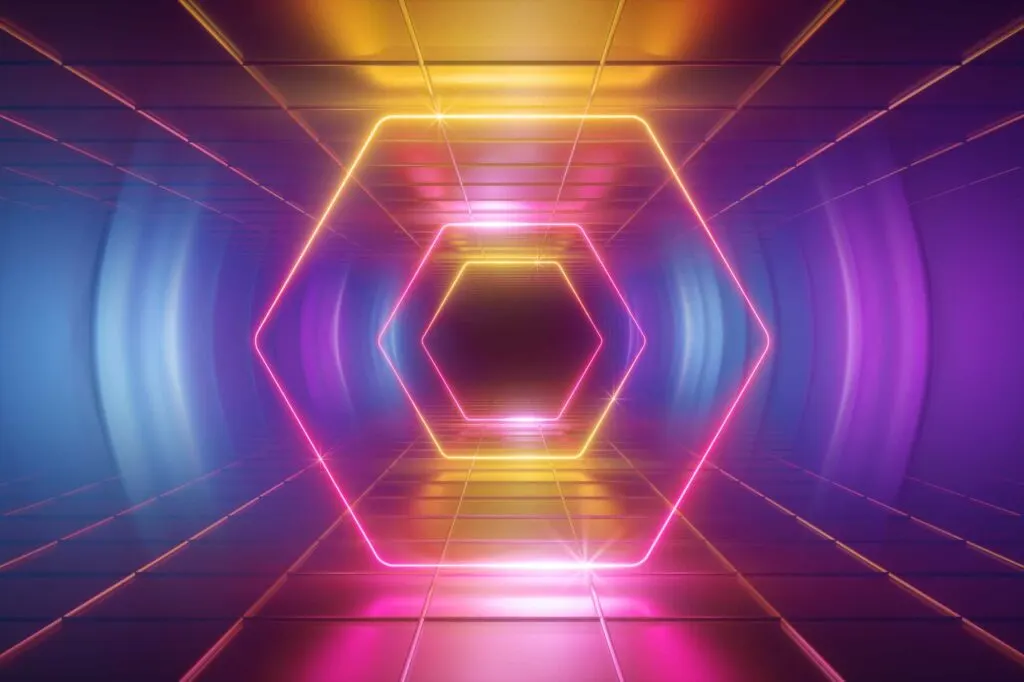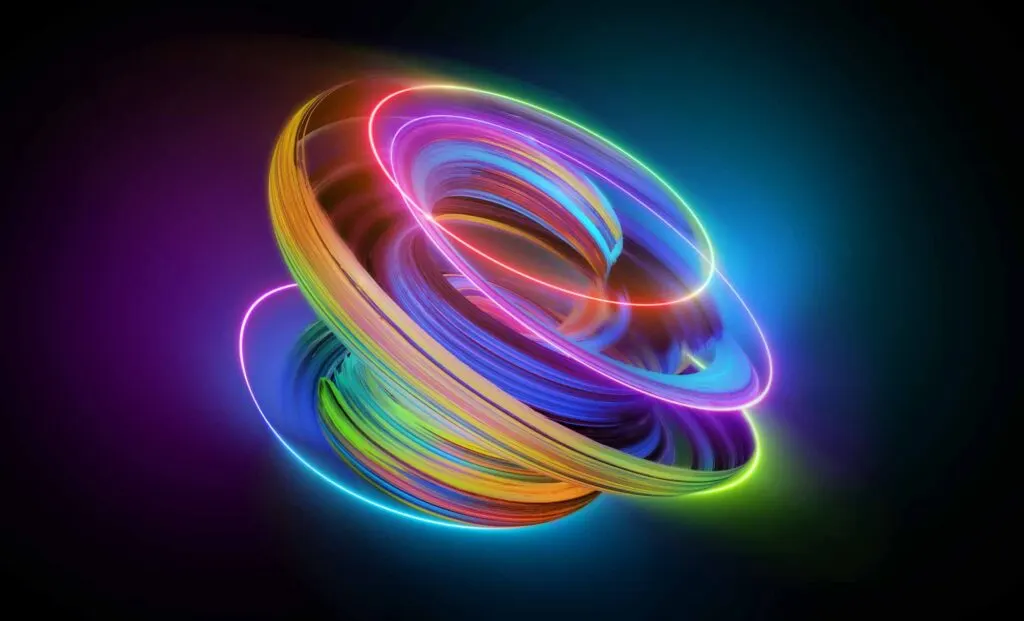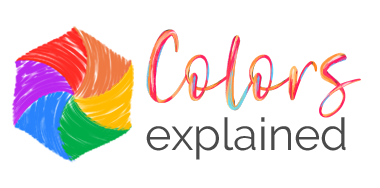The neon colors, also known as fluorescent colors, of the 80s fashion might have come and gone, but they still hold much potential in the design industry if you know when and how to use them.
Neon colors are the bold and daring rebels of the color world, serving aesthetic and practical purposes. Yet, only some have given their origins and cultural associations much thought.
Let’s explore neon colors, their psychological meaning, and how to use them in fashion, graphics, and design.

What Are Neon Colors?
All minerals can reflect light, but about 15% contain specific impurities or ‘fluorescence’ that enable them to absorb ultraviolet (UV) light.
Fluorescent or neon colors come from these fluorescent minerals. When a UV light hits the surface of these minerals, the atoms absorb the energy (i.e., it ‘activates’ the mineral), which causes them to emit a bright-colored light.
For example, fluoride produces a luminescent blue under UV light. Sometimes it also shows yellow, red, white, green, and red.
Since neon colors result from a chemical reaction and can only appear during illumination, they are not present on the RYB or CMYK color wheel.
Still, these ultra-bright hues appear on the RGB color model. In this model, neon colors are luminescent or bright versions of primary and secondary colors.
“Fluorescent colors stand apart from other types of color because they emit light, making them luminescent. When the emitted light falls in the visible spectrum that the human eye can see, the luminescence is rendered in color,” says graphic designer Grace Fussell.
While artists and creatives have used neon pigments since their invention, most recorded neon art uses light, making neon light the main emphasis when examining the applications and history of neon colors in art.

Curiously, the neon lamp was discovered by the chemist Morris Travers. At the same time, luminescent paint was created by Joseph and Bob Switzer in the 30s after having to recover from an accident in a dark room. Nowadays, fluorescent colors are mostly used in hair dye, nail polish, make-up, and clothing.
Examples of neon colors, their names, and hex codes typically used in the design industry:
- Neon (or “UFO”) Green or Electric Lime: #39FF14
- Neon (Electric) Orange: #FF3503
- Neon Blue, Fluorescent, or Electric Cyan: #00FFE5
- Neon (or “Plastic”) Pink or Neon Magenta: #FF1493
- Bright (or “Proton”) Purple: #8A2BE2
- Neon Yellow, Bright Chartreuse, or Absinthe: #E6ED07
Although neon and fluorescent lights are different, the terms are interchangeably used when referring to these vibrant colors.
That’s why fluorescent colors and neon colors are thus the same. Yet, the name ‘neon’ has become to more commonly used term.
Neon Colors Harmony
When looking for neon color combinations, remember the rules of complementary colors, which also apply to these intense variations of primary and secondary hues.
Hence, when it comes to neon shades, electric blue goes well with electric orange due to their complementary nature.
The combination of neon green and neon magenta, as well as neon yellow and vivid purple, create a beautiful pairing.

Psychological Meaning Of Neon Colors
Colors arouse particular feelings and emotions, which have forged specific associations in our brains. For example:
- Bright colors, including neon colors, link to high energy, frivolity, and youthfulness.
- Light colors are related to stillness, peace, cleanliness, and softness.
- Pastel colors are linked to playful calmness and friendliness.
- Dark colors are typically associated with seriousness, power, and sophistication.
- Muted colors are related to safety, familiarity, and genuineness.
- Metallic colors are associated with elegance, wealth, luxury, and status.
Since neon colors are the brighter versions of traditional primary and secondary colors, they tend to carry the same psychological traits. However, in some cases, it can also have the opposite meaning.
For example, traditional blue and neon blue can be associated with feelings of calm, peace, and stability.
Pink and neon pink are both considered feminine, playful, and childlike.
On the other hand, traditional green and neon green couldn’t be more opposing. Green signifies growth, vitality, and nature. Neon green is more representative of toxic chemicals and digitalization.
Pros And Cons Of Using Neon Colors
Neon Colors Pros
Some of the benefits of using neon colors in designs:
Neon colors are memorable and grab viewers’ attention. It is thus suitable, for example, when used in a ‘call-to-action’ button on a website or an illustration for a poster advertisement.
Interior designers use neon lights in commercial spaces, like nightclubs and bars, since it is more visible at night than standard lights.
Neon signs are also perfect for restaurants and other stores since they last long and are energy efficient.
Neon colors can create any pop art or psychedelic-style design. That’s why many festival and party attendees often use neon paint on their faces.
It can thus also serve party invitations, interior décor, a magazine article on hallucinogens, and so forth – the options are endless!

Neon Colors Cons
The downsides of using neon colors in designs:
Neon colors can strain your eyes, i.e., making it difficult to read, regardless of whether the neon text is on a light or dark background.
Neon backgrounds in print and digital media can overpower the main message, essentially muting any text.
Neon lights have a limited range of color options.
You can’t print neon colors accurately in CMYK. Instead, you must print with PMS (Pantone colors).
Using neon colors in an interior space can be overwhelming. Use it sparingly – as accents – rather than the base color.
Neon Color Codes and Examples
Here are a few collections of neon color hex codes to inspire and help you create your next design:
Watermelon
#E3FFBD
#AEFFA3
#FF8875
#00C78B
#0FFFAF
Brazil vibes
#FDFF00
#9CFF2E
#38E54D
#2192FF
#04773B
Young soul
#9B5DE5
#F15BB5
#FEE440
#00BBF9
#00F5D4
Teenager
#0C0F0A
#FF206E
#FBFF12
#41EAD4
#FFFFFF
Beach ball
#04E762
#F5B700
#DC0073
#008BF8
#89FC00
Night signs
#643181
#CE96FB
#FF8FCF
#00C2BA
#037A90
Did you enjoy this article about neon shades? Then share it on your social media! Also, feel free to drop the name of your favorite neon color in the comments! I’d love to hear from you!
Reference entry
Grace Fussell, Shutterstock (2019, September 25). Neon Colors: Design Tips, History, and Powerful Color Palettes. https://www.shutterstock.com/blog/neon-colors-history-design
